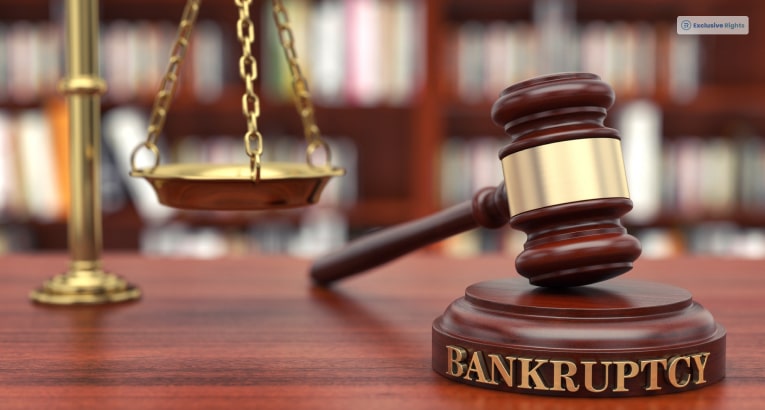
Table Of Contents
- What Is Bankruptcy?
- Bankruptcy Basics: The Financial Safety Net
- Chapter 7: A Fresh Start
- Chapter 13: The Repayment Plan
- The Automatic Stay: A Breather
- Life After Bankruptcy: Rebuilding Your Financial Castle
- How Does Bankruptcy Work In The US?
- Step 1: Determining Eligibility
- Step 2: Hire a Bankruptcy Attorney (Or Not)
- Step 3: File the Bankruptcy Petition
- Step 4: The Automatic Stay
- Step 5: Meeting of Creditors (341 Meeting)
- Step 6: Chapter 7 or Chapter 13
- Step 7: Discharge and Fresh Start
- How Long Do Bankruptcies Last?
- Chapter 7: The Quicker Option
- Chapter 13: A Bit More Patience
- The Silver Lining: Rebuilding Your Credit
- How to Accelerate the Recovery Process:
- Secured Credit Cards:
- Budgeting and Financial Responsibility:
- Financial Education:
- Check Your Credit Report:
- Where Does Bankruptcy Appear Within Your Credit Reports?
- What Can You Do If You Want To File Bankruptcy?
- Frequently Asked Questions (FAQ)
- Final Thoughts On Bankruptcy
How Long Does A Bankruptcy Last?
Bankruptcy is considered one of the most popular forms of resolving existing debts in the United States.
But, the decision to declare bankruptcy can be a tough decision to make, which requires effective decision making skills.
In this article, we will discuss the length of bankruptcy that exists within the United States.
What Is Bankruptcy?

We’ve all heard the term “bankruptcy” tossed around, often with a shroud of negativity and despair. But what does it really mean? Is it a financial death sentence, or is there more to the story? Let’s dive in and demystify this complex concept with some engaging and conversational insights.
Bankruptcy Basics: The Financial Safety Net
At its core, bankruptcy is a legal process designed to help individuals, businesses, and even municipalities manage overwhelming debt. Think of it as a financial safety net when you find yourself drowning in a sea of bills, loans, and creditors knocking at your door.
Chapter 7: A Fresh Start
If you’ve ever played a video game and wished for a “reset” button in real life, Chapter 7 bankruptcy is as close as you can get. It’s the most common form of bankruptcy for individuals and involves the liquidation of assets to pay off debts. Here, you get a fresh start with a clean slate – or at least, as close to it as possible.
Chapter 13: The Repayment Plan
Not all bankruptcies are about hitting the reset button. Chapter 13 is more like a structured repayment plan. If you have a steady income, you can propose a plan to repay your debts over three to five years. It’s like finding a path out of the financial labyrinth without losing everything you own.
The Automatic Stay: A Breather
One of the most comforting aspects of bankruptcy is the “automatic stay.” As soon as you file for bankruptcy, this legal shield is activated. It’s like a pause button for creditors – they can’t hound you, sue you, or take your property. It’s a breather, giving you some room to breathe and sort things out.
Life After Bankruptcy: Rebuilding Your Financial Castle
Bankruptcy isn’t the end of the road; it’s just a fork in the path. Yes, it can impact your credit score, but it’s not the end of your financial journey. Many people who’ve gone through bankruptcy eventually rebuild their credit and get back on their feet. It takes time, patience, and responsible financial habits, but it’s entirely doable.
How Does Bankruptcy Work In The US?

So, you’ve hit a financial pothole and you’re wondering, “How does bankruptcy work in the USA?” Fear not, because we’re about to break it down for you in a friendly and conversational manner. Let’s unravel this legal and financial maze.
Step 1: Determining Eligibility
Before you dive headfirst into the world of bankruptcy, you need to establish your eligibility. This involves taking the “means test” for Chapter 7 bankruptcy. If your income is below your state’s median, you’re in the clear. If not, Chapter 13 might be your path.
Step 2: Hire a Bankruptcy Attorney (Or Not)
While you can file for bankruptcy on your own, having a bankruptcy attorney by your side is like having a GPS for a complicated road trip. They’ll help you navigate the tricky legal paperwork and ensure you’re making the right decisions for your financial situation.
Step 3: File the Bankruptcy Petition
This is where the rubber meets the road. You’ll file a petition with your local bankruptcy court. Your attorney, if you have one, will guide you through this process, making sure you don’t miss any important details.
Step 4: The Automatic Stay
Once you’ve filed, the magical “automatic stay” comes into play. It’s like a force field that shields you from creditors. They can’t call, sue, or repossess your property. You get a little breathing room.
Step 5: Meeting of Creditors (341 Meeting)
Your next stop on the bankruptcy journey is the 341 meeting, or the meeting of creditors. Don’t worry, it’s usually not as intimidating as it sounds. You’ll meet with a trustee who will ask you questions about your financial situation. It’s a crucial part of the process.
Step 6: Chapter 7 or Chapter 13
If you’re going for Chapter 7, this is where your non-exempt assets may be sold to pay off creditors. If you’re in Chapter 13, you’ll work on your repayment plan, which will last three to five years.
Step 7: Discharge and Fresh Start
The light at the end of the tunnel! Once you’ve completed all the required steps, you get a discharge. In Chapter 7, this means your eligible debts are wiped out. In Chapter 13, you’ve successfully stuck to your repayment plan. You’re now on your way to a fresh financial start.
How Long Do Bankruptcies Last?
Bankruptcy, for most people, is like a storm cloud in their financial forecast. But here’s the silver lining: it won’t last forever. So, if you’re wondering how long those dark clouds will hang over you, read on as we unravel the timeframes in an engaging and conversational way.
Chapter 7: The Quicker Option
If you’ve filed for Chapter 7 bankruptcy, here’s the good news – it’s the express lane to a fresh start. In most cases, it’ll only hang around on your credit report for a cozy 10 years. That might sound like a long time, but compared to other financial black marks, it’s relatively short-lived.
Chapter 13: A Bit More Patience
Chapter 13, on the other hand, is like a slow-cooked stew of financial rehabilitation. This type of bankruptcy sticks around for seven years on your credit report. Why the difference? Because in Chapter 13, you’re essentially on a payment plan for a portion of your debt, which takes a little more time to resolve.
The Silver Lining: Rebuilding Your Credit
The good news is that, even while bankruptcy is on your credit report, you can start rebuilding your credit immediately. It’s like watering the garden after the storm – your credit score can start sprouting new life.
How to Accelerate the Recovery Process:
Secured Credit Cards:
Consider getting a secured credit card to rebuild your credit. These cards are backed by a cash deposit, which reduces risk for the lender and allows you to demonstrate responsible credit use.
Budgeting and Financial Responsibility:
Demonstrating good financial behavior is key. Stick to a budget, pay your bills on time, and avoid new debts.
Financial Education:
Equip yourself with the knowledge to make informed financial decisions. Learn from past mistakes and make sure they don’t happen again.
Check Your Credit Report:
Regularly check your credit report for accuracy. Report any errors to the credit bureaus and have them corrected.
Remember, the impact of bankruptcy on your credit diminishes over time. So while the initial hit may sting, your credit score can recover faster than you think.
Where Does Bankruptcy Appear Within Your Credit Reports?

Filings of bankruptcy generally appear within the section of credit reports, which tend to be public reports.
Credit Departments are known to actively collect or receive public records of data from courts to keep credit reports updated till the current date.
What Can You Do If You Want To File Bankruptcy?

Filing bankruptcy will give you a fresh start in life and provide you with the newly acquired ability to access credit.
To effectively file a bankruptcy petition, you are advised to hire a good and experienced bankruptcy lawyer.
The bankruptcy attorney will guide you in effectively going through the legal proceeding of bankruptcy so that you can be relieved from the debts that you are unable to pay.
The lawyer will also assist you in the process of representing you in federal court by providing evidence regarding the reasons you are not being able to pay your debts.
Moreover, the attorney will also come to the rescue in determining any assets that you possess for the purpose of liquidation, which can be used for repayment of some of the debts that you owe to creditors.
Frequently Asked Questions (FAQ)
Yes. You can improve your credit scores after you have filed for bankruptcy. This is because filing for bankruptcy gives a fresh new start to you, which includes access to credits.
Yes. You can apply for a fresh credit card after being discharged from all your previous debts. Make sure you apply for a secured credit card, as it will provide security regarding the payments.
Final Thoughts On Bankruptcy
Filing for bankruptcy can be a tough decision, but it will be worth it when you are no longer able to pay your debts.
Filing bankruptcy will allow you to have a fresh start in your life and provide newly gained access to credit.
Due to this, it is advisable that you hire an effective and experienced bankruptcy lawyer to deal with your petitions and filings in the federal courts.
It is also advised that if you are being discharged from all your existing debts after acquiring a fresh start, you take responsibility for effectively making use of credit sources.
This is so that you do not face a similar situation all over that can lead you to bankruptcy.
Read More:









